Ryan Hall's Blog, page 286
February 22, 2016
Photos: 2016 Disney Princess Half Marathon
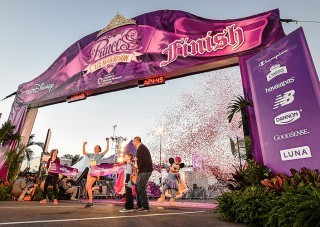
Touring the Walt Disney World resort in Lake Buena Vista, Fla., the Disney Princess Half Marathon welcomed 24,000 runners on Sunday, the finale of a four-day race weekend at the resort.
The winner was 21-year-old Shannon Crawford, a student at the University of Virginia who was running just her third half marathon. She crossed in 1:24:49, saying afterwards, “I’m still in shock!”
The Disney Princess Half Marathon is one of two women-focused events on the RunDisney calendar, the other being the Tinkerbell Half Marathon in May at DisneyLand in California.
Here are photos from the race, courtesy of Walt Disney World:
Photo Gallery
1 of {count}
Back to Start
View Larger Image

View Larger Image

View Larger Image

View Larger Image
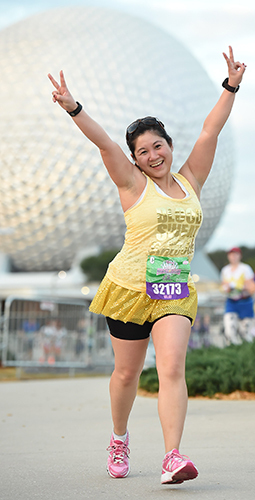
View Larger Image

View Larger Image

View Larger Image

View Larger Image
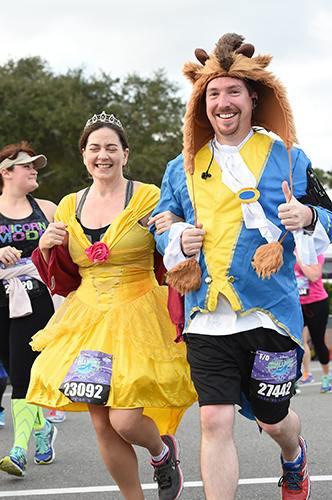
View Larger Image

View Larger Image

View Larger Image

View Larger Image

View Larger Image

Related Galleries

Photos: 2016 Moab Red Hot

Photos: 2016 Los Angeles Marathon

Photos: 2016 Miami Marathon and Half Marathon

Photos: 2016 Carlsbad Marathon and Half

More Galleries
The post Photos: 2016 Disney Princess Half Marathon appeared first on Competitor.com.
10 Years Later, Jason McElwain Inspires Through Running
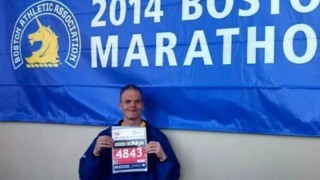
Remember Jason McElwain? Ten years ago, the teenager living with high-functioning autism inspired the world by checking into a high school basketball game and scoring 20 points in the span of four minutes, making him a national celebrity.
ESPN caught up with McElwain a decade later in this video, which you can see below. Among his accomplishments? He’s a 5-time marathoner who’s run the Boston Marathon twice, including a 2:57 finish in 2014.
The post 10 Years Later, Jason McElwain Inspires Through Running appeared first on Competitor.com.
Why You Should Attend a Holistic Running Renewal Camp

Cool Impossible Run Camp, Photo: Eric Orton Mountain Running Academy
Admit it, there are times when running feels like an energy suck. When you have to find the time. When you need to do an interval workout. When you feel you should go faster or farther. The truth in each of these statements depends upon your perspective. Instead of listing all the effort you give running, consider all the things running gives you: Improved health, new friends, better fitness, inner strength, a happier vibe and a better outlook on life, just to name a few.
Harnessing the positive attributes of running can take your mood and your performance to a new level. The shift comes in realizing that running isn’t something that ends when you leave your shoes at the door. What you eat, how you sleep and your mindset are all intertwined with how you perform and feel on a run. Conversely, how you feel while logging miles spills over into the rest of your life. Becoming self-aware, appreciating your surroundings and being present in any given moment are all steps—albeit somewhat vague and ambiguous—along the journey.
“I expected nutrition and rest to be important to running,” says Leslie Cline Harper, a self-taught, 40-year-old runner from Charlotte, N.C., who attended a Mindful Running Retreat in Moab, Utah, last fall. “But it surprised me to learn that self-compassion and confidence have a place too. They need and deserve as much attention as nutrition and rest. In applying these principles, I feel a new freedom with my running practice.”
When you look at running in a new light, you are able to tap into the holistic mind and body connection and, ideally, turn your daily run into a gift instead of a chore. But, as for many new things, the experience is often better (or at least easier) when shared. Luckily for runners looking to go beyond faster splits and PRs, you’re not alone. Many professionals and age-groupers alike are on a similar quest, and new camps and programs incorporating aspects of mindfulness are cropping up to meet the need.
The approach can vary from ethereal to nuts and bolts, so understanding your desires—back to the concept of self-awareness—is essential. We checked out three programs that aim to bring new appreciation to the simple act of putting one foot in front of the other. At each one, coaches share experiential knowledge in stunning locales best explored by foot, with plenty of time for informational sessions, yoga, meditation and even hanging out by a campfire.
RELATED: 2016 Running Camps You Should Check Out
The post Why You Should Attend a Holistic Running Renewal Camp appeared first on Competitor.com.
Photos: 2016 U.S. Olympic Trials 50K Race Walk
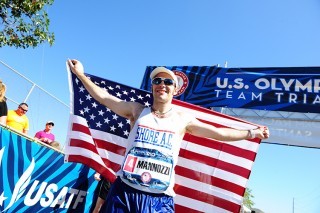
One week after the U.S. Olympic Trials Marathon in Los Angeles, another Olympic team berth was at stake in Southern California, this time at the U.S. Olympic Trials 50K Race Walk in Santee, Calif., on Sunday. Race walking is an endurance sport that differs from running in that one foot must appear to be in contact with the ground at all times.
In the end, John Nunn made his third Olympic team by winning the event in 4:03:21—race walking roughly 31 miles at 7:49 mile pace. Nick Christie finished second and Michael Mannozzi third, but both have yet to hit the Olympic standard time and will have until May 8 to make the mark.
The USATF Women’s 50K Race Walk Championships also took place in Santee on Sunday, though no Olympic berths were at stake since the 2016 Olympics do not have a women’s 50K. Erin Taylor-Talcott blew away the field Sunday, winning the national championship by more than 30 minutes in a time of 4:44:26.
Here are photos from the race, taken by Ryan Bethke:
Photo Gallery
1 of {count}
Back to Start
View Larger Image

The women's start.
View Larger Image

The men's start.
View Larger Image

Erin Taylor-Talcott separated from the pack early.
View Larger Image

John Nuun and Nick Christie were side by side for the first half of the race.
View Larger Image

View Larger Image

John Nuun crossed in 4:03:21 to win.
View Larger Image

View Larger Image

John Nuun won and made his third Olympic team.
View Larger Image

Taylor-Talcott won the U.S. 50K Race Walk championships by more than 30 minutes.
View Larger Image

Nick Christie finished second in the men's race.
View Larger Image

Michael Mannozzi placed third and made the podium.

More Galleries
The post Photos: 2016 U.S. Olympic Trials 50K Race Walk appeared first on Competitor.com.
February 19, 2016
Coach Culpepper: Planning Your Racing Season
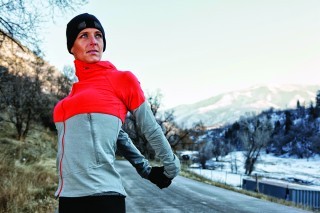
Photo: istockphoto.com
Once the initial excitement of the new year wears off, February is a good time to really start focusing on your goals for the months ahead: Race times you’re aiming to hit, places you want to experience, unique events that sound fun or even redemption for unfinished business. A whimsical mindset rarely produces desired results. Now is the time to think through what is important to you by forming a blueprint that will serve as the guide to get you where you want to go.
Cornerstones
The first step is actually based on reflection. Take a moment to think about last year. What went well? Where did you fall short of expectations? What could you have done better? Use the answers to these questions to acknowledge what worked for you while homing in on the areas where you need the most improvement to ensure you don’t make the same mistakes. The key to this process isn’t rewriting the entire book—in most cases, it’s about making small changes that have a big impact.
Target goals
Many athletes, even the best ones, struggle with seeing the big picture and only think about what event is next on the calendar. It’s important to identify a few key races throughout the year that you really want to nail, and work backward from those events. It can be tempting to keep the same schedule year after year and, inevitably, duplicate the same training. Your training should be targeted at the end goal—not the intermediate ones or less important races that often become a distraction to the larger objective. This may require skipping an annual race you enjoy and adjusting your mindset to focus on the main goal for the season.
Variety
Each racing season should include some element of variety. Ruts are created when the same plan or program is duplicated each year. Variety should not only be a theme in training, but in races as well. This might mean focusing on the 5K for a period of time before resuming your half or full marathon training. This could also include a trail race or something else totally different from your norm. Breaking up the routine is important as long as it doesn’t compromise your goals.
RELATED: Coach Culpepper: Evaluating a Race
The post Coach Culpepper: Planning Your Racing Season appeared first on Competitor.com.
Video: Three American Ultrarunners Triumph at Mont Blanc

Last summer, a small team of Nike Trail-sponsored athletes from the United States went overseas to Chamonix, France to compete in two of the biggest and most challenging ultra endurance events in the world, the UTMB® (Ultra-Trail du Mont-Blanc), a 170K/105-mile race circumventing the Alps, crossing into 3 countries with over 33,000 feet of elevation gain, and The CCC® (Chamonix-Courmayeur-Champex), a 101K race starting in Courmayeur, Italy and also finishing in Chamonix, France with over 20,000 feet of elevation change.
American men have not typically fared well there, but Colorado’s Zach Miller, California’s Tim Tollefson and Oregon’s David Laney set out to prove that they could be competitive in the imposing European mountains.
Enjoy this 22-minute documentary by Los Angeles-based filmmaker Billy Yang, who chronicled the adventure.
RELATED: Americans Run Strong at UTMB, CCC in Chamonix
The post Video: Three American Ultrarunners Triumph at Mont Blanc appeared first on Competitor.com.
How Bad Do You Want It? — A Closer Look at the Mind’s Role in Endurance Sports

Republished with permission of VeloPress from How Bad Do You Want It? Mastering the Psychology of Mind over Muscle by Matt Fitzgerald. Learn more at velopress.com/howbad.
Endurance athletes, by definition, endure. They endure long hours of training, the privations of a monastic lifestyle, and all manner of aches and pains. But what endurance athletes must endure above all is not actual effort, but perception of effort.
This is the phrase that scientists now use to refer to what athletes normally describe as “how hard” exercise feels in a given moment, and it represents the central concept of the psychobiological model of endurance performance. It is perceived effort, according to the latest science, that causes the mountain biker to hit the wall on the last hill of a race, and constrains endurance performance in all circumstances. The most important discovery of the brain revolution in endurance sports, and the most important truth you can know as an endurance athlete, is this: One cannot improve as an endurance athlete except by changing one’s relationship with perception of effort.
Even something as seemingly physical as training conforms to this principle. The training process increases an athlete’s physical capacity, but at the same time it changes her relationship with perception of effort. The fitter the athlete becomes, the easier it feels for her to swim, bike, run, or whatever at any given speed, and that is why her performance improves. If the athlete’s physical capacity increased but her relationship with perception of effort did not change accordingly, her race times would not get any better because she would be psychologically unable to access that increased physical capacity.
In reality, the scenario I’ve just described could never happen.
Perceived effort is essentially the body’s resistance to the mind’s will. The fitter an athlete becomes, the less resistance the body puts up. Therefore increased physical capacity is always felt.
Not all endurance athletes are head cases, but given the nature of the sports in which they participate, all endurance athletes face psychological challenges, and all such challenges are either directly or indirectly related to perception of effort. If racing wasn’t hard as hell, athletes would not experience moments of self-doubt, or prerace apprehension, or post-race regret, or mental burnout, or intimidation. Even most training errors, such as overtraining, originate in the fear of suffering.
Psychologists use the term ‘coping’ to refer to a person’s behavioral, emotional, and cognitive responses to discomfort and stress. Endurance sports are largely about discomfort and stress; hence they are largely about coping. In a race, the job of the muscles is to perform. The job of the mind is to cope. But here’s the hitch: The muscles can only perform to the degree that the mind is able to cope. Endurance sports are therefore a game of “mind over muscle.”
To become the best athlete you can be, you need to become really good at coping with the characteristic forms of discomfort and stress that the endurance sports experience dishes out, beginning with perceived effort and extending to the many challenges that are secondary to it, such as fear of failure. You must discover, practice, and perfect the coping skills that conquer these challenges most effectively. My own term for a highly developed overall coping capacity in endurance sports is mental fitness.
RELATED: How ‘Perception of Effort’ Can Make or Break a Race
The best source of knowledge concerning the most effective methods of coping with the challenges of endurance sports is the example set by elite endurance athletes. The methods that the greatest athletes rely on to overcome the toughest and most common mental barriers to better performance are practically by definition the most effective coping methods for all athletes. Champions are the ultimate role models for sports psychology no less than they are for training and nutrition. It is not possible to succeed at the highest level of any major endurance sport with a B+ mental game. No athlete, no matter how talented, can win on the international stage today without harnessing the full power of his mind to maximize both the amount of effort he is able to give and the amount of performance he gets out of his best effort.
To learn from the champions, it is not enough to be exposed to their stories of overcoming. We must also know how to interpret these examples. What is the essential nature of the challenges the most successful racers face and overcome? How do we understand the coping skills they use to master these challenges in a way that allows us to replicate them in our own experience? These are the questions we have to answer in order to benefit from the example set by the best of the best. The psychobiological model of endurance performance helps us here. By applying this new science to elite-athlete case studies we can tease out practical lessons that can then be applied to our own athletic journeys.
The job of How Bad Do You Want It? is to help you become your own sports psychologist— a competent and ever-improving practitioner of the new psychology of endurance sports.
In every race, something within each athlete (something we may now specify as perception of effort) poses a simple question: How bad do you want it? To realize your potential as an athlete, you must respond with some version of this answer: More. And then you have to prove it. It’s easy in principle, hard in practice—much harder than figuring out how to train, what to eat, and which shoes to wear.
Republished with permission of VeloPress from How Bad Do You Want It? Mastering the Psychology of Mind over Muscle by Matt Fitzgerald. Learn more at velopress.com/howbad.
The post How Bad Do You Want It? — A Closer Look at the Mind’s Role in Endurance Sports appeared first on Competitor.com.
Molly Huddle Has High Hopes for 2016
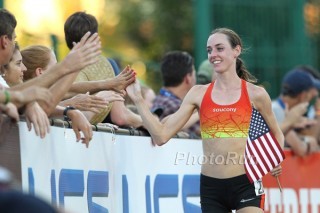
Photo: PhotoRun.net
(c) 2016 Race Results Weekly, all rights reserved. Used with permission.
NEW YORK — It’s been nearly two years since Molly Huddle has lined up on an indoor track, a long 24-month stretch that has seen her rise to world-class levels. Huddle will return to the indoor oval here on Saturday at the NYRR Millrose Games for the women’s 5000m. Hinting that she is in very good shape, Huddle would not rule out an attempt on the American indoor record of 14:47.62, which Shalane Flanagan has held since 2009.
“I’m going to run hard. I definitely want it to hurt,” Huddle told Race Results Weekly, speaking quietly at the meet press conference.
Having been training at her warm weather base in Phoenix, Ariz., Huddle has kicked off 2016 with ample motivation. She wants to build on the successes of 2014 and 2015, where she won eleven national titles and set national records at 5000m (14:42.64) and 5K (14:50). Not altering her regimen too much, Huddle is taking a calm approach to the early months of 2016. Along with coach Ray Treacy, the Notre Dame alum knows the ultimate goal is a medal at August’s Olympic Games in Rio de Janeiro.
With that being said, she hopes to run well here this weekend and then again at the United Airlines NYC Half on March 20, two dates circled on her calendar. Huddle is the defending champion of the latter event, where she set a U.S. record for an all-women’s race, and plans to use the half marathon as a springboard for the rest of the year.
“I hope to have a similar build-up this year, and the focus is making the Olympic year and running well there. I probably will keep things similar the front half of the year, and not race as hard as much afterwards,” she said.
Saturday’s race is not a rust-buster, nor is it strictly a time trial. Huddle has put in a plethora of strength work and built a solid base of training the past few months, running alongside New Balance’s Emily Sisson and Ireland’s Mary Cullen. Her weekly mileage has broken into the triple digits twice this year, a high mark for the 2012 Olympian.
“[The NYC Half] was a great thing to have on the schedule because it forced me to do a lot of strength work that I can feed off on all year, and it is obviously a great event for me, so I really wanted to come back. We are going to be doing that this year and hoping it pays off again and keeps me strong all year through August,” Huddle said. Turning her attention to Saturday, Huddle couldn’t help but get subtly excited. “Sometimes strength turns into speed when you line up to race, and sometimes you just feel rusty. We’ll see which one it is!”
The current world lead at 5000m is Kim Conley’s 15:09.31 (on an over-sized track), which Huddle should break. She said she is capable of a sub-15 clocking, but just how far under 15-minutes is the great unknown (Huddle raised her shoulders at the thought of a particular time). Among those Huddle will be facing Saturday are Emily Infeld, the very athlete who nipped her for the 10,000m bronze medal at last year’s IAAF World Championships, as well as Kenya’s Betsy Saina, New Balance’s Abbey D’Agostino, Nike Oregon Project’s Jordan Hasay, Boulder Track Club’s Laura Thweatt, and local standout Marielle Hall (Nike).
Still hesitant to elaborate on last year’s fourth-place in Beijing—for which she told Race Results Weekly was a devastating result multiple times last fall—Huddle seems to be looking ahead.
“I’m glad I had those races [after Worlds] to look forward to, I think it just helps to focus on the next race and helped me go forward,” she said. In her races following the IAAF World Championships, Huddle won national crowns at 5K, 10K, 12K, 10 miles, and 20K.
On The Armory’s 200m banked oval, Huddle wants to replicate the tempo and in-the-zone mentality that propelled her to meteoric success in both 2014 and 2015.
“I think just because it is 200 meter loops instead of 400m you can kind of get into a zone and click them off especially in the 5000m, which can be a long time to focus,” she said.
While intrinsically Huddle is motivated, last weekend’s U.S. Olympic Marathon Trials served as an added dose of motivation and adrenaline, as she watched former training partner Amy Cragg run away with the women’s victory after assisting teammate Shalane Flanagan.
“I’m inspired by that. I think Amy’s had a good marathon in her for a while, so for it to come out in those conditions is really impressive. I’m glad I wasn’t running on that day, but it definitely makes me interested to try the marathon,” Huddle said. She wouldn’t rule out a fall marathon, and has been anxious to try the distance for many years. “I’ll definitely be asking all my friends who‘ve run marathons before [for advice]. Hopefully it’s in the near future.”
If the right race plays itself out on Saturday, Huddle could cross the line as the newest American record holder. It could be the beginning of a monumental year for Huddle, a dedicated grinder and feisty competitor.
“It’s a tall order for the first race in February” Huddle began, slightly downplaying her record hopes as not to appear over-confident. “[It’s] something I’d love to have, but the race has to set up.”
The post Molly Huddle Has High Hopes for 2016 appeared first on Competitor.com.
February 18, 2016
Emily Infeld Heading Into 2016 With Confidence

Infeld celebrates her bronze medal at last summer's world championships. Photo: PhotoRun.net
At this time last year, Emily Infeld was rehabilitating a sacral stress fracture and not running on land. Now she’s a world championships medalist who hopes to set a 5,000-meter personal best at her season opener in the Millrose Games on Saturday.
“I am hoping for a PR,” the 25-year-old Infeld said the other day while finishing up an altitude-training stint in Flagstaff, Arizona. “I don’t know exactly what kind of shape I’m in but I would love to run under 15:00.” Her best is 15:07.18, set at the Portland Track Festival last June.
After Millrose, Infeld plans to run the 3,000 on March 11 at the U.S. indoor championships, with an eye toward making the team for the following week’s world indoor championships.
If she dons the U.S. jersey for the world meet in Portland, she’ll do so with different expectations—from herself and others—than when she ran the 10,000 at the world championships in Beijing last August.
Infeld emerged from that meet, of course, with a bronze medal after nipping teammate Molly Huddle at the line. For Emily, the performance was both an eye-opener and a game-changer.
“Worlds really gave me the confidence to run with anyone and put myself in a good position in the race,” she says. “I learned to push myself out of my comfort zone—only then could you have the possibility to truly surprise yourself and achieve something great. I would rather go after a fast time in a race and die than not give myself a shot.”
Infeld took some down time in the fall before resuming full training for this Olympic year. Things have been going well since December, she says, in part because of new Bowerman Track Club members.
“It has been great with the addition of Shelby Houlihan, Colleen Quigley and Betsy Saina to the group,” Infeld says. “We haven’t overlapped with Amy Hastings or Shalane for more than easy runs in their buildup [to last Saturday’s Olympic Marathon Trials], but it is great having them around to look up to and learn from.”
Infeld is well aware that there will be no more “surprise” performances now that she has a medal from a global championships. She’s using that recognition as another source of motivation as she launches her 2016 campaign.
“I definitely feel pressure, especially as a lot of people think I lucked into the medal because the race was slow,” Infeld says. “I want to prove that I can run fast times and be competitive with the best at their best, not just in a tactical race.
“I have definitely upped my training game and am very motivated this year,” she says. “That being said, I know that you need consistency in training in order to make big leaps, so I am being cautious in the sense that I want to ensure I can get to the start line healthy. Getting through [coach] Jerry [Schumacher]’s training is grueling, and I know he can get me to maximize my potential as an athlete, but I have to be smart and listen to my body.”
RELATED: Infeld Wins Bronze Medal at World Championships
The post Emily Infeld Heading Into 2016 With Confidence appeared first on Competitor.com.
Running Tech Buzz: Epson Runsense SF-810
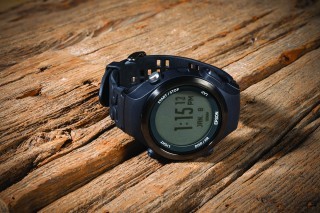
It’s not surprising that Epson-sponsored Meb Keflezighi chooses the SF-810. It’s a pure, no-nonsense run watch with deep training and racing features—and no activity tracking or phone notifications. The most popular running watch brand in Japan, Epson is also a major player in mobile sensing. In the SF-810, Epson uses its own highly efficient GPS and other sensors for 20 hours of battery life with GPS and HR enabled. The HR sensor is among the most reliable we have tested. Stride length is automatically calibrated to GPS and takes over in blind spots (think trails). One of Meb’s favorite 810 metrics is to compare his stride length to cadence. Altitude, ascent and descent data is via a barometric sensor and not the more common, less accurate GPS method.
Breakdown
Easy configuration
Setting up via the watch is a bear, but is easy via the Run Connect app.
How fast was that last 5K, 10K, etc.?
Set up auto laps for every mile, along with four other distances of your choosing.
Quick heart rate read
No need to be in a workout mode to see your heart rate. Great for a morning check.
RELATED: Running Tech Buzz: Timex Ironman One GPS+
The post Running Tech Buzz: Epson Runsense SF-810 appeared first on Competitor.com.
Ryan Hall's Blog
- Ryan Hall's profile
- 21 followers



